Sharing Genealogy Information
Native American Genealogy
November 30, 2012 by ramona
Filed under Genealogy Research Resources, Latest News, Sharing Genealogy Information
 Native American genealogy can present some unique research problems, distinct from family trees that are deeply rooted in Europe and Great Britain.
Native American genealogy can present some unique research problems, distinct from family trees that are deeply rooted in Europe and Great Britain.
Native American genealogy is simply not a straightforward matter of pouring through the usual church and census records.
Researchers on the trail of their Native American ancestors need to develop an understanding of tribal:
- Traditions
- Culture
- Naming customs
- Kinship systems
- History
All of which vary greatly between the different nations.
The good news for genealogy beginners’ starting out with Native American genealogy is that there is no shortage of resources for learning the basics of the nation you are researching. Two wonderful sources to start the ball rolling are the National Archives: Native American Heritage and Family Search: American Indian Genealogy
Once you have done your homework, here is another excellent resource you will find enriching.
Native American Genealogy: A recorded history
Edward Curtis
In the early 1900s, photographer Edward Curtis began to fulfill a major life goal: to record as much of the traditional life of Native American peoples as possible, before it disappeared.
Endorsed by President Theodore Roosevelt and funded by financier J.P. Morgan, Edward Curtis devoted the next thirty years of his life to the project. Travelling across the United States and Canada as far as the Northwest Territories Curtis documented over 80 tribes, for which he earned the nickname “Shadow Catcher”.
What makes Curtis’ body of work so remarkable is his insight that the present is a result of the past, and therefore must play a significant role in the portrayal of a people. To this end Curtis was not satisfied with posed pictures taken on reservations but instead set out to capture life lived or as it was lived in more natural settings.
Due to his efforts, now an invaluable collection of media includes recorded:
- Language
- Music
- Tribal mythologies and history
- Described tribal population
- Traditional foods
- Dwellings
- Clothing
- Games
- Ceremonies
- Burial customs
In addition to this, Curtis managed to capture the images of many notable Indian people of the time, including Red Cloud, Geronimo, Medicine Crow and Chief Joseph.
http://youtu.be/oVPLF9tXWlg
In due course Curtis shot over 40,000 photographs, conserved 10,000 audio recordings and made what is considered the world’s first documentary film.
A Family History of Witchcraft
October 17, 2012 by ramona
Filed under Articles, Genealogy Research Resources, Latest News, Sharing Genealogy Information
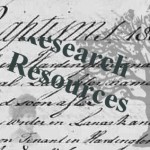 “In the Nineteenth day of March last I went to Salem Village, and lodged at Nathaniel Ingersol’s near to the Minister Mr. P.’s House, and presently after I came into my Lodging, Capt. Walcut’s Daughter Mary came to Lieut. Ingersol’s and spake to me; but suddenly after, as she stood by the Door, was bitten, so that she cried out of her Wrist, and looking on it with a Candle, we saw apparently the marks of Teeth, both upper and lower set, on each side of her Wrist.”
“In the Nineteenth day of March last I went to Salem Village, and lodged at Nathaniel Ingersol’s near to the Minister Mr. P.’s House, and presently after I came into my Lodging, Capt. Walcut’s Daughter Mary came to Lieut. Ingersol’s and spake to me; but suddenly after, as she stood by the Door, was bitten, so that she cried out of her Wrist, and looking on it with a Candle, we saw apparently the marks of Teeth, both upper and lower set, on each side of her Wrist.”
Such is one account of a person afflicted by witchcraft in Salem Village in 1692.
Mary, daughter to Militia Commander Jonathan Walcott was one of the first of the accusers in the Salem Witch trials and one of the accusers of Bridget Bishop, the first woman to be executed during the trials.
All Hallows Eve is quickly approaching and those with ancestors involved in witch trials may be interested in learning about some fantastic research resources.
Number one on the list is, The Wonders of the Invisible World Being an Account of the Tryals of Several Witches Lately Executed in New-England, to which is added A Farther Account of the Tryals of the New-England Witches written by Cotton Mather and Increase Mather. You can read about Mary, Bridget and many others in this account of the trials given by peoples involved. A digital copy of this book can be found free at Project Gutenberg.
Another interesting resource is The Associated Daughters of Early American Witches. This group focuses on sustaining the memory of those accused of witchcraft in Colonial America. This membership only society also actively searches out living descendents of the accused.
If your interests lie overseas, you will want to check out The Witch Hunts (1400-1800). Amidst the great information on the website, is an online mock-up of a witch-hunt set in Germany in 1628. In this simulation, you play a fictional character however, the events are historically accurate (warning, this may be disturbing to some). The outcome of your trial will depend on choices you make during the simulation.
One last resource is the Survey of Scottish Witchcraft 1563 – 1736. On this site, you will find a database containing the names of almost 4,000 people accused of witchcraft in Scotland.
Before you start trick or treating for your ancestors download Genealogy Beginner’s fantastic Family Tree Charts and Research Tracking Forms available with your 30-Day FREE TRIAL.
Record Guides at RecordsBase.com
October 9, 2012 by ramona
Filed under Articles, Genealogy Research Resources, Latest News, Sharing Genealogy Information
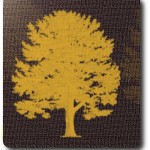 RecordsBase.com is a genealogy website designed to help family history hunters locate US documents to fill out the branches on their family tree. New to the site (in response to a review suggesting more resources would be helpful in this area) are record guides created to help genealogists locate the right records from their collection of over 2 billion public records.
RecordsBase.com is a genealogy website designed to help family history hunters locate US documents to fill out the branches on their family tree. New to the site (in response to a review suggesting more resources would be helpful in this area) are record guides created to help genealogists locate the right records from their collection of over 2 billion public records.
RecordsBase.com’s PR manager, Ashley Evans, says,
“Every state and county has its own way of storing public records and archival documents, by adding this content to our website, we help members navigate through that complex maze and find the records they need, no matter where and how they are stored. This is just one more way RecordsBase.com is listening to the customer and finding ways to meet their needs for a more pleasant user experience on our website.”
Included in the guides are:
- Steps on tracing archival documents
- Added content for the 100 largest counties in America
- Information provided by state
To use the guides simply click on the type of record you wish to search on the left sidebar. For instance clicking on Death Records will take you to a page that explains:
· Types of Death Records (certificates and indexes)
· Information Found in Records
· Locations for Death Records
· Restriction to Death Records Access
· Online Death Records Search
When you are ready to begin your research you will find that, the search forms are easy to use and allow you to search by individual state and county.
Like so many genealogy services, the site does require a fee based membership. Available in either a 1-Year Premium Membership that includes an unlimited number of searches including death, divorce, birth, military, marriage, census records, immigration lists, cemetery listings, obituaries & newspapers, surname history, and passenger lists.
A 3-Month Basic Membership that includes 3-months access to search millions of records, including death, divorce, birth, military, marriage, cemetery, and census records.
Before you begin searching, download your Family Tree Charts and Research Tracking Forms available with you 30-Day Free Trial to Genealogy beginner.
Genealogy Wikis
October 1, 2012 by ramona
Filed under Articles, Genealogy Research Resources, Latest News, Sharing Genealogy Information
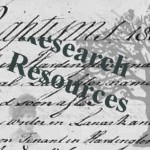 Have you used a wiki for genealogy?
Have you used a wiki for genealogy?
Genealogy wikis are growing in popularity and it is no wonder as they are shaping up to be a fantastic free resource for doing genealogy research. Not to mention a great way collaborate with others who have similar research interests.
Two genealogy Wikis that stand out are WeRelate (over 2,000,000 pages of information on individuals and families) and Wiki Tree (3.9 million profiles).
Both sites are free use and allow users to upload GEDCOM files, add scanned documents, photos and maps. In addition to this, the sites are filled with family history stories, biographies, and pedigrees (Family Trees).
Here is a short list of just some of the ways you can use a wiki for your genealogy:
- As a collaboration tool that allows researchers to work together to research, compare, publish, correct and update family tree information.
- As a research tool to locate data on your research interests
- As a great resource to learn about genealogy
- Plan a Family Reunion – advertise, plan, coordinate, and communicate with your family
- Blog about your research
Using a genealogy wiki is easy; as soon as you register, you can begin working on your personal genealogy pages by adding your profile, starting a watch list or simply go straight to building your family tree.
Genealogy Just Got Easier
September 19, 2012 by ramona
Filed under Articles, Genealogy Research Resources, Latest News, Sharing Genealogy Information
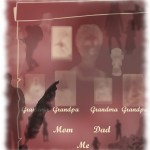 If you have been keeping your eye on MyHeritage.com, you already know that genealogy just got a little easier.
If you have been keeping your eye on MyHeritage.com, you already know that genealogy just got a little easier.
Why?
Because MyHeritage has an amazing new software that can help you find ancestors while you sleep.
The new software called Record Matching is constantly working to compare every individual entered in a family tree on their site to over 4 billion historical records. For users of My Heritage, Record Match will notify you when it has found matching documents such as:
- Birth, Marriage or Death documents
- Census records
- A tombstone photo
- A newspaper article
- Books
All of this information is found automatically using semantic analysis…and…it is in addition to the automatic matching that checks for your ancestors in other user’s family trees.
Family Tree Tools
Possibly the most phenomenal thing about this search software is…not only does it match Robert & Bob it can actually translate languages to find matches. Each match found comes with a confidence score using a star system so you can check out the most likely matches first, which is huge time saver.
Another little tool that family history hunters are going to love is the option to confirm or reject a match. However, one word of caution here, if you do find a match you will have to manually transfer the data y to your family tree and create your source citation to go with it.
The Price of an Ancestor
By now, you are probably wandering how much this is going to cost. Well here is a little good news – bad news. First, the good news; the Record Match feature is free to users with one or more family trees on my heritage. What this means is that you will be automatically notified of matches and given a short transcript or extract of the matching record. The bad news…viewing the full record or document requires a subscription. However, you do have a pay as you go option if you do not want to purchase a full subscription.
Visit MyHeritage Record Matches to find out more about this cool genealogy tool…but before you go, make sure you are ready with some genealogybeginner.com Family Tree Charts and Research tracking forms: available with your 30-day free trial.
Medieval Scottish Roots
September 4, 2012 by ramona
Filed under Articles, Genealogy Research Resources, Latest News, Sharing Genealogy Information
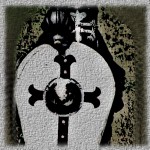 If you are ready to start digging for ancestors that go way-way back …all the way, back to medieval times on the British Isles.
If you are ready to start digging for ancestors that go way-way back …all the way, back to medieval times on the British Isles.
Here is a website that you should put at the top of your family history list.
People of Medieval Scotland is an amazing database containing 8600 records. This database consists of all known people of Scotland from 1093 to 1314 and it is the culmination of two projects funded by the Arts and Humanities Research Council.
The Projects
The Paradox of Medieval Scotland is a study of the social relationships before the wars of independence. This will be riveting for those who have traced their British ancestry back to Anglo-Norman origins. The information drawn from over 6000 charters provides biographical data for all known Scottish peoples between 1093 and 1286.
The Breaking of Britain is concerned with the period extending from Alexander II’s attempted revival to the abolition of cross border, land holding by Robert the Bruce.
The Database
The database as a whole is a collection of information on every known individual mentioned in documents relation to Scotland between the death of Malcolm III in 1093 to Robert the First’s parliament in Cambuskenneth in 1314. What makes this database so special is that it is based on the relationships between the people named in the documents.
The next feature that separates this database from so many others is the database tutorial, which makes navigating it easy…even for a genealogy beginner. Searching the database can be done using a broad base of criteria such as Institutions, factoids, people, sources, relationships, transactions and terms of tenure.
For example, a search for the surname Sinclair under the “Factoid” search returns a list of Sinclair’s by name ranging from 1093-1314. Clicking on one these will bring up a pop up box that gives you a short biography and an option to view the full record. Choosing to view the full record will move you to page with a total number of associated factoids such as:
Transaction factoids: Lists transactions such as gifts of land, general correspondence, oaths of fealty and much more
Relationship Factoids: Names relationships connected to the individual, for instance both familial and guardianships
Title Factoids: Lists all titles and offices held by the individual
Witness Factoids: Documents on which the individual is listed as a witness
Family Tree
After browsing through the available documents users also have the option of looking at the listed family tree for the individual. Under my Sinclair search, I found the family tree for the line on a tab at the top of the page. Clicking on this menu item the family tree listed three trees in which this individual could be found: Scottish Royal Family, Earl David descendants, English royal family and Manx royal family.
Although the database covers all territory, which was to become part of Scotland prior to the death of Alexander III, those looking for specific genealogy information on individuals from Orkney or Shetland will be disappointed if they try a geographic search, However if you know who your ancestors are from those areas there certainly is a great deal of information included.
The last two points that should convince you to put this site in your favorites is that the database is free and there is no need to register to use it.
Before you head off to visit this amazing website, be sure to download your free Family Tree Charts, available with your 30-day free trial membership to genealogybeginnner.com.
Is There Gold in your Family Tree?
August 14, 2012 by ramona
Filed under Articles, Genealogy Research Resources, Latest News, Sharing Genealogy Information
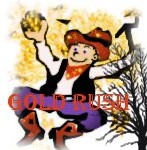 One of the most enjoyable things about climbing your family tree is discovering ancestors who were involved in one of histories great events.
One of the most enjoyable things about climbing your family tree is discovering ancestors who were involved in one of histories great events.
August 16th marks the anniversary of the Klondike Gold Rush and any genealogy beginner that descends from one of the miners or “Stampeders” who set off to strike it rich in 1897 needs to know about Yukon GenWeb.
The Yukon GenWeb is a compilation of free genealogy resources loaded with links and information to all things related to the “last great gold rush”. Their resources include a listing of related Archives & Libraries, Books and Publications, Yukon Cemeteries, Census Returns, Church Records and Registers.
Some of the highlights of their resources include:
- A collection of Directory Records with a link to Ferguson’s 1901 Alaska/Yukon Directory, which lists over 24,200 gold rush participants
- Pioneer Biographies in their Family Records collection
- Relevant First Nations information
- Immigration records including Border Entry, 1908-1918: List of Ports, Dates and Microfilm Reel Numbers
- Passenger Lists, 1865-1922
- Land Titles Records
- Military Records
Before you head off to search for your Gold Rush ancestors make sure you sign up for a 30-day free trial membership to Genealogy Beginner and download your complimentary family tree charts and research tracking forms.
You are going to need them when you start exploring the Pan for Gold Database, North West Mounted Police (NWMP) – Personnel Records, 1873-1904, Manager & Proprietors of Historic Yukon & Alaska Roadhouses, Hotels and Saloons plus so much more!
Ships Lists: Free Genealogy Resource
August 5, 2012 by ramona
Filed under Articles, Genealogy Research Resources, Latest News, Sharing Genealogy Information
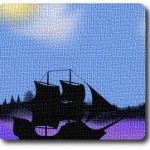 Genealogy beginners looking for immigrant ancestors should head straight over and bookmark The Immigrant Ships Transcribers Guild (ISTG) website.
Genealogy beginners looking for immigrant ancestors should head straight over and bookmark The Immigrant Ships Transcribers Guild (ISTG) website.
The ISTG is a volunteer group that has been working since 1998 to transcribe ships lists on a global scale and publish them on the internet. In the years since its inception, the ISTG website has grown to include volumes of passenger manifests.
The scale of the site may make navigating it a little intimidating to the novice family history hunter. A short tutorial will help make things a little easier.
How to Search the ISTG
Step one:
Locate the search box on the upper left hand corner of the opening page and enter the surname you are researching. This should move you forward to a page with a long list of matches.
Step Two:
On the upper right hand corner of the page, you will find an option for advanced searches…click the option.
The advanced search will give you four text boxes
1. All – will return pages that include all of the terms entered
2. Phrase – will return pages matching the exact phrase
3. Any – will return pages that match any of the terms – in no specific order
4. None – includes other selected items and must be used in tandem with other fields
For example, entering “Alexander McCallum” into the “All” field returns ships named Alexander as well as passengers surnamed Alexander and McCallum.
The same search entered in the “Phrase” field returns only passengers named Alexander McCallum.
In the Any field these search terms return the same results as entering into the “All” field. It is good to use the “None” field in tandem as you can enter terms you do not want matched in order to narrow your search.
Once you are comfortable using the search function you will be free to search some of this sites great free resources from Jacobite rebellion ships to New York arrivals.
One great feature of this site that you will not want to miss is the ISTG compass, which is a tool to simplify your searches by breaking down resources into consumable information bites.
The ISTG is another site that relies heavily on volunteer transcribers, if you would like to help check out their Guild Application for more information.
Make sure you are prepared for your visit to The Immigrant Ships Transcribers Guild with Genealogy Beginners Family Tree Starter Kit, available with your 30-day free membership.
Research Americas Earliest Immigrants FREE
July 30, 2012 by ramona
Filed under Articles, Genealogy Research Resources, Latest News, Sharing Genealogy Information
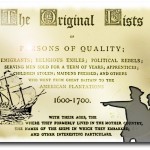 Family Tree fanatics wishing to research the earliest immigrants to the Americas are in for a real treat with this fantastic book published in 1874 and titled The Original Lists.
Family Tree fanatics wishing to research the earliest immigrants to the Americas are in for a real treat with this fantastic book published in 1874 and titled The Original Lists.
The book will be of great interest to any family history seekers whose family came to the Americas during 1600-1700.
Its contents are comprised of the original lists of:
- Persons of quality
- Emigrants
- Religious exiles
- Political rebels
- Serving men sold for a term of years
- Apprentices
- Children stolen
- Maidens pressed; and others who went from Great Britain to the American Plantations, 1600-1700
It is exciting to note that within the pages of this fantastic resource is a list of early immigrant passengers that came over on the Mayflower (1620), The Fortune (1621), The Anne and Little James(1623).
Along with this bounty of genealogical booty, the book lists the ages of individuals, the ships they embarked on and various other interesting details such as the following:
“The bill of mortality of the said rebells that dyed since they were reced on board and were thrown overboard out of the said ship are these uiz. December the Sixteenth Thomas Venner, Seventeenth W* Guppy, Eighteenth John Willis, Nineteenth Edward Venn, the same day Philip Cox one and Twentieth Robert Vawter, Five and Twentieth Wm Greenway, January the first Peter Bird, Witnessed by the commander, March and officers’ of the said ship this Eigth day of January 1685.”
John May
John Penn
John Maddison
Gabriel Whithorn
Malcum Fraser
One very interesting chapter is “Entries relating to America taken from the Indexes to the Patent Rolls, commencing 4 James I 1606 and ending 14 William III 1702.” The entries in this section are very intriguing and include entries such as:
“Grant of Incorporation, by the name of the treasurer and Company of Adventurers and Planters in the city of London and Bristol, For the Colony and Plantation in Newfoundland.”
Taken from manuscripts held in the State Department; Her Majesty’s Public Record Office, England, this incredible resource is filled from cover to cover with fascinating histories of the earliest pioneers to the Americas.
Before you start flipping through the pages, remember to download your Family Tree Charts and Research Tracking forms available with your 30- Day free trial to Genealogy Beginner.
Read The Original Lists at Internet Archives
Find a Grave: Free Family Tree Resource
July 5, 2012 by ramona
Filed under Articles, Genealogy Research Resources, General Tips, Latest News, Sharing Genealogy Information
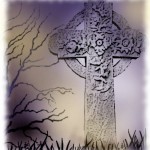 Find a Grave is a FREE genealogical resource that every genealogy beginner should visit and bookmark today.
Find a Grave is a FREE genealogical resource that every genealogy beginner should visit and bookmark today.
Founded in 1995 by Jim Tipton, a self-proclaimed nerd with the odd hobby of searching out and visiting the grave sites of the famous; Tipton’s goal in the creation of the site was to share his interest with like-minded others.
It was not long before he came to the realization that his hobby had great historical and genealogical significance.
What Does Find a Grave Contain?
Filled with memorials this virtual cemetery has listings for:
- North America (by province and state)
- South America
- Europe
- Asia
- Australia and Oceana
- Africa
Not to be forgotten is the “Famous Graves” section that has a comprehensive search field that allows for numerous search types.
It also has some fun categories such as:
Yearly Necrologies: listings of individuals who died during specific times
Posthumous Reunions: a page that lists movies and TV shows with cast members who have passed away. For example when I clicked on the TV show Star Trek, it listed 46 cast members (both guest starts and original crew). For each listing, it gave the date and place of birth and death, a biography that contained many details, cause of death, place of burial and special details.
Interesting Epitaphs: This category is self explanatory and indeed does contain some very interesting epitaphs.
Is it Worth My Time?
The best way to tackle this question is by giving it a test run. For this purpose, I will use three of my ancestors, one from the US, one from Canada and one from Scotland using the broadest search category…surname search.
- U. S. – Undseth: This search did not return any direct line ancestors, however there were a few cousins listed.
- Canada – McCallum: This search found several of my ancestors graves listed in three provinces.
- Scotland – Sinclair: This Search was the most successful and returned numerous family lines from the Orkney Islands.
Find a Grave is most definitely worth your time. In fact, you could easily spend hours and hours searching through the site for burial records to flesh out your family history.
How do I Join?
Joining is easy; simply fill out the online registration and you can immediately begin searching for your ancestors.
Find a Grave is a true genealogy treasure that allows you to not only search for your ancestors but also to contribute to the already huge database. Before you get started, be sure to download your complementary Cemetery Visit Tracking Form available with your free 30-day trail membership to Genealogy Beginner.
